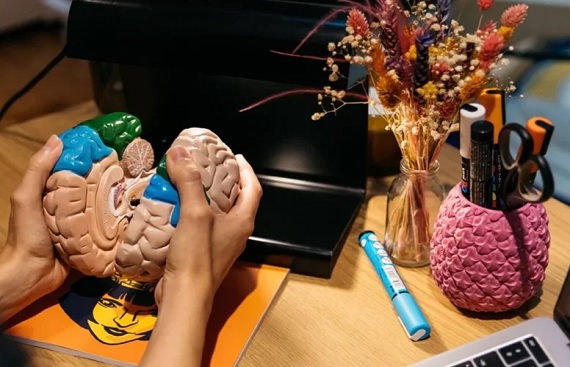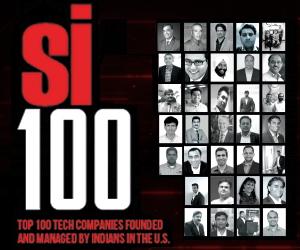Why NeuroTech Is the Most Important Startup Trend of the Next Decade

- India is building neurotech for real, population-scale problems.
- Breakthrough BCIs are pushing toward a screenless future.
- India’s massive brain-data advantage creates an unbeatable lead.
While the world obsesses over artificial intelligence that lives in the cloud, a far more intimate revolution is unfolding inside the human brain. Neurotechnology the direct bridge between biological neurons and digital systems is no longer science fiction confined to research labs.
In India, a new generation of startups is turning the brain into the ultimate interface, the ultimate sensor, and ultimately the ultimate product. This is not another app economy. This is the beginning of the post-screen era, and India is positioning itself at the center of it for reasons no other country can match.
Dr Shylesh M P, Consultant Neurosurgeon, Altius Hospital, says, “Neurotechnology is a powerful bridge between the human brain and machines, enabling us to monitor, modulate, and even enhance neural activity”.
India’s Neurotech Rise
![]()
India does not have the luxury of building neurotech for wellness gadgets aimed at the worried well. Here, neurotechnology is being forged in the crucible of real, massive problems, 20 million people living with epilepsy, 70 million battling mental health disorders, a stroke every 40 seconds, and a geriatric population set to triple by 2050. When your domestic market contains every possible neurological condition at population-scale, you don’t build toys you build infrastructure.
The genetic diversity of 1.4 billion people across thousands of ethnic groups creates the world’s richest dataset for brain patterns. The same technology that decodes seizure precursors in a tribal child in Jharkhand must also work on an urban executive in Mumbai with chronic migraine. This forces Indian neurotech companies to solve for universality from day one, creating solutions that are inherently more robust than anything developed in smaller, more homogeneous markets.
The Real Leap
![]()
Forget wearables that merely observe. The breakthrough happening right now is bidirectional, devices that not only read brain signals with unprecedented clarity but write back to the brain in real time. Indian startups are pioneering closed-loop systems that detect an epileptic seizure 3-5 minutes before it happens and deliver precise electrical stimulation to abort it, non-invasively. Others are building neurofeedback platforms that achieve depression remission rates comparable to antidepressants but without side effects, using only 8-12 weeks of training.
The most radical shift, cognitive enhancement is moving from pharmacological to electrical. Early systems can now increase working memory capacity by 25-40% during complex tasks, documented in controlled studies. When a rural health worker can temporarily triple her ability to process patient data, or a student preparing for competitive exams can sustain deep focus for hours longer, the societal multiplier effects are staggering.
Unbreakable Neurotech Moat
![]()
Every minute a neurotech device is used, it generates terabytes of high-resolution brain activity data linked to real-world outcomes. Five Indian startups working in this space have already crossed the threshold of 100 million recorded brain-hours each a volume that dwarfs what most global players have accumulated. This is not just data, this is labeled, longitudinal, outcome-correlated neural data across ages, pathologies, languages, and environments.
This creates a defensive moat of historic proportions. The algorithms that can predict Parkinson’s progression five years early, or detect suicidal ideation from micro-patterns in brain rhythm, are being trained on datasets no new entrant can replicate without a decade of real-world deployment. India’s neurotech leaders are building what the oil companies of the 20th century never had, a resource that literally grows while being used.
The Five Indian NeuroTech Startups That Will Define the 2020s
![]()
BrainSightAI, founded by Rimjhim Agrawal and Laina Emmanuel, is pioneering AI-driven brain mapping for mental health and neurology. The company recently secured $5 million led by IAN Alpha Fund to expand across India, pursue FDA approval, and advance its mission of transforming brain care through deep-tech innovation.
Neuphony was a pioneering Indian neurotech startup dedicated to enhancing mental wellness through EEG-based wearables and cognitive insights. Its devices helped users track focus, stress, and brain activity in real time. Known for democratizing neuroscience, Neuphony empowered individuals to understand and improve their mental fitness through accessible, data-driven technology.
Neuphony's offering connects these disparate applications in the embedded and IoT domains”, says Ria Rustagi, Co-Founder & CEO of Neuphony.
InMed Prognostics is a global leader in AI-driven medical imaging, offering FDA-cleared tools like Neuroshield for precise brain volumetry and rapid diagnostics. With advanced research, human-centred design, and worldwide deployments, InMed delivers accurate, ethnicity-aligned insights that transform radiology and elevate clinical decision-making.
Cyclops Medtech develops advanced eye-tracking and vestibular solutions for early detection of dizziness and balance disorders. Serving multiple specialties, we empower clinicians with evidence-based diagnostic and rehabilitation tools used across 900+ clinics in 14 countries to improve neurological care.
Nexstem develops advanced non-invasive Brain-Computer Interface solutions that let humans interact with technology using their thoughts. With powerful EEG headsets and an integrated BCI ecosystem, Nexstem enables real-time brain signal decoding for healthcare, wearables, gaming, research, and human performance enhancement.
Also Read: The Role of Neuroinformatics in Advancing Brain-Computer Interfaces explained by Suyash Bhogawar
India’s Fastest Path to a Screenless Future
![]()
While other countries debate the ethics of brain data, India has quietly built the world’s most pragmatic neurotech regulatory framework. The distinction between medical-grade and wellness-grade devices is clear, clinical trial requirements are proportionate to risk, and data residency rules actually favor domestic companies. When you combine this with universal health identifiers and a national digital health mission that reaches 1.3 billion people, you get the fastest possible path from prototype to population-scale impact.
The killer application is not treatment it’s replacement of the screen. The startups that master high-bandwidth, reliable, non-invasive brain-computer interfaces will make smartphones obsolete within fifteen years. Early Indian systems already achieve typing speeds of 90 characters per minute using only brain signals faster than many people type with thumbs. When combined with augmented reality glasses, the brain becomes the new operating system.
Conclusion!
India’s neurotech wave is more than a market opportunity it’s a rewrite of humanity’s operating system.
As neurological disorders rise and the need for scalable solutions becomes urgent, Indian innovators are building the algorithms, datasets, and regulatory foundations that will shape global human-machine interaction.

